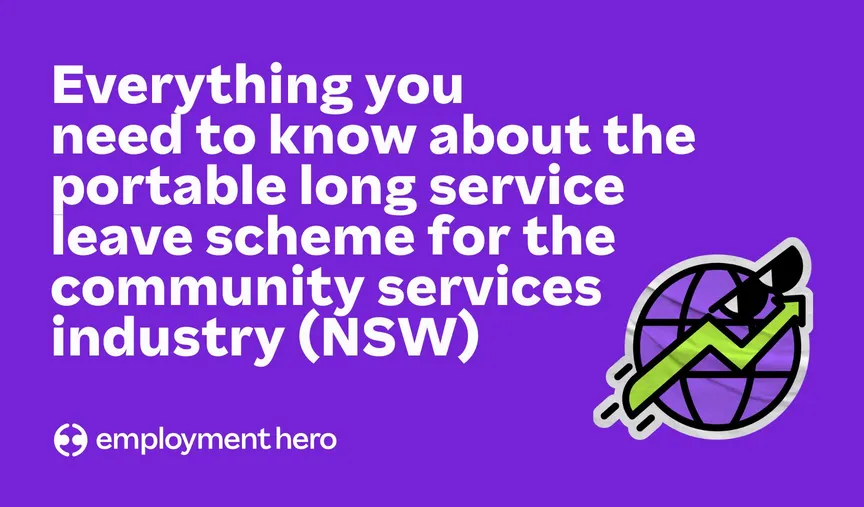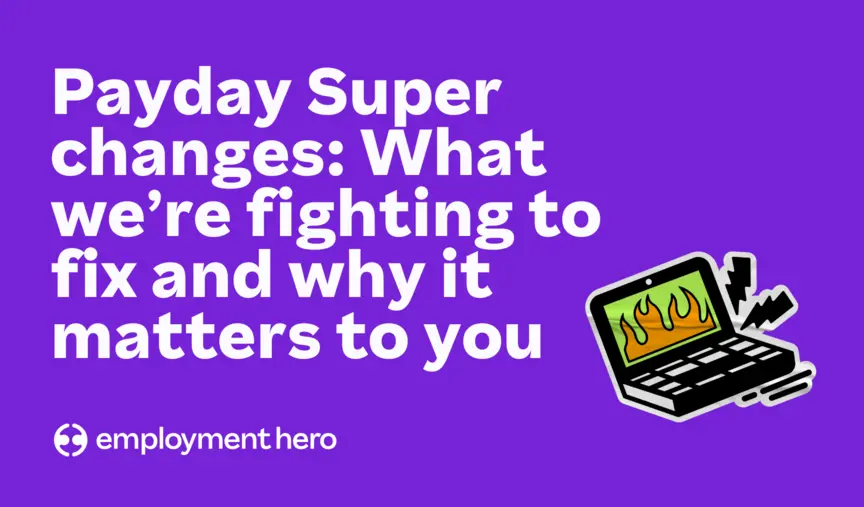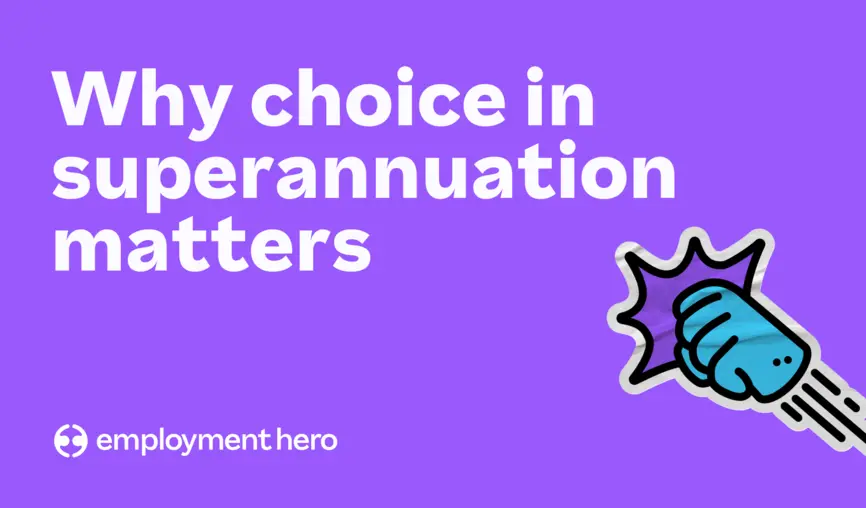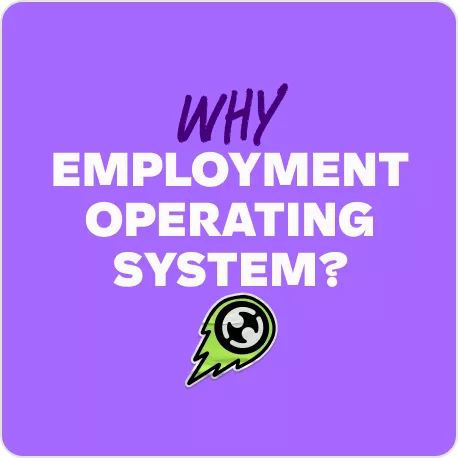Formal warning and disciplinary procedure for employees
What happens when employees are starting to underperform? Here are a few ways to keep your business compliant and teams on track.

Recently we talked about conducting productive performance reviews. The best businesses are always improving their operations to stay competitive in their industry. To be able to do this, employees and managers need to be performing to a high standard.
High performance in business can lead to increased productivity from more engaged and committed employees and also helps with retaining good employees.
Disclaimer: This blog post does not constitute formal legal advice. This is intended as general information only. For formal legal advice, you must consult a lawyer. Employees should refer to their employment agreement or contact their employer for more information. Employers should also check any relevant industrial instruments or awards that apply to their employees and business.
What happens when employees start to underperform?
Poor-performing employees can have a negative effect on a business, for example:
- Unhappy customers or clients
- Decreased productivity
- High turnover
- Unmotivated and underperforming employees.
Looking at the above, it’s easy to see why a business may need to address poor performance.
What is a fair disciplinary procedure that managers, leadership or employers should be following as part of a formal warning process for employees?
Let’s dive in…
Why do businesses need a formal warning process?
Before we look into formal warnings and disciplinary action for employees, we need to look at why we would need one in the first place.
A formal warning procedure would be actioned when an employee is either underperforming or demonstrating signs of serious misconduct.
Employee performance issues
Underperformance, or poor performance, is when an employee isn’t doing their job to an acceptable standard or is behaving unacceptably at work.
This can include anything from:
- Not carrying out their work to the required standard or not doing their job at all
- Not following workplace policies, rules or procedures
- Unacceptable behaviour at work, eg. harassment or bullying
- Disruptive or negative behaviour at work, eg. toxic behaviour
All of these types of employee behaviour could warrant a formal warning to take place. Or even as serious workplace misconduct.
There’s a big difference between the two though!
Pro tip: In order to prevent underperformance from happening in the first place, you want to make sure you’re running regular performance reviews to make sure communication is always open between you and your employees.
Employee misconduct
Serious misconduct is when an employee:
- Causes serious and imminent risk to the health and safety of another person or to the reputation or profits of their employer’s business or
- Deliberately behaves in a way that’s inconsistent with continuing their employment.
Examples of serious misconduct can include anything from theft, fraud, assault or drugs and alcohol in the workplace.
Formal written warning process for employees
If an employee is not meeting the required standard of performance or is displaying signs of misconduct, a formal written warning may be issued.
You should provide an informal warning to the employee first and give them an opportunity to improve their performance or behaviour.
If there’s no improvement or further misconduct after the informal warning, you may need to take formal disciplinary action by issuing a written warning.
Step 1: Informal verbal warning
The first step in any formal warning procedure is to try and resolve the issue verbally. Verbal warnings to employees can be used as a fair warning to advise them that they aren’t meeting the expectations of their role.
While this isn’t a formal written warning letter, you do need to detail the specific areas of underperformance and provide tangible examples for improvement.
Our Chief People Officer, Alex Hattingh said in an article for the Seek Employer Blog “The number one rule regarding formal warnings is that they should never be a surprise to an employee.”
Performance issues should be flagged during regular one-on-one meetings, and written warnings should happen after other avenues have been pursued.
After you have explained your concerns to an employee and provided them with strategies on how to improve performance, regular follow-up meetings should be held. These can be used as an opportunity to talk about progress.
See if there’s any further help or support the employee needs. Where performance has improved, you should make sure to recognise this. If verbal warnings don’t garner any changes, you may want to move on to Step 2.
Top Tip: Keep a note or email your employee following any verbal discussions you have about their performance. Doing this will make sure everything is clear. It also ensures that you have a written record of the topics that were discussed for future reference. It also provides an audit trail if an unfair dismissal claim arises in the future. A digital employee management system can help.
Step 2: Formal written warning letter
As Alex said, a written warning should come as no surprise to an employee. They should be written in the form of a letter that’s personally addressed to the employee.
When you issue a formal written warning letter, make sure you reference any verbal conversation and warnings that have previously been issued, along with the dates that these informal warnings were issued.
In formal written warnings, you also want to:
- Specify details of the areas where your employees were, and still are, underperforming (providing examples if/when possible)
- Create an action plan and communicate dates to check in with your employee
- Make sure it’s 100% clear that another warning letter could be issued or any other consequences (e.g. termination) if the employee does not meet your expectations
- Reassure your employee that the warning is completely confidential
Once the first written warning has been provided, we advise setting up another face-to-face meeting with your employee to discuss the letter in person.
If you need any help writing a formal warning letter, we’ve got a step-by-step guide for you to check out!
Step 3: After the final written warning
If the employee hasn’t changed their behaviour and continues underperforming after multiple informal and formal warnings, the employer has the right to act out consequences as long as they were clearly outlined to the employee.
If they have clearly explained the possible consequences of the employee not improving (including termination), then the employer has the right to action this.
Step 4: Employee termination
Termination should only be considered as a final resort. You can see on the Fair Work website that;
If an employee is terminated, the employer needs to make sure of the following for the employee in question:
- isn’t being unfairly dismissed
- is given the right notice of termination
- is given the right final pay
The employer may also think about getting independent advice from an employer association or lawyer if necessary. Hopefully, you won’t need to get to step three or step four.
The wrap up
Misconduct in the workplace can come in many forms, from lateness and absenteeism all the way to more serious issues like harassment.
It’s important that as an employer you take a formal and structured approach when dealing with employee misconduct. By doing this, you’re providing a clear message to your employees that unacceptable behaviour won’t be tolerated in the workplace.
In our experience, a verbal warning is usually enough to stop bad behaviour in its tracks.
For more information on employee termination, check out our quick and helpful guide to a company discipline and termination policy. Want more? If you have to let staff go, be sure to download our employee offboarding checklist below.
Related Resources
-
 Read more: NSW Government introduces Portable Long Service Scheme for the Community Services Industry
Read more: NSW Government introduces Portable Long Service Scheme for the Community Services IndustryNSW Government introduces Portable Long Service Scheme for the Community Services Industry
The NSW Government has introduced portable long service leave for the community services industry. Learn what it is and what…
-
 Read more: Payday Super changes: What we’re fighting to fix and why it matters to you
Read more: Payday Super changes: What we’re fighting to fix and why it matters to youPayday Super changes: What we’re fighting to fix and why it matters to you
Big changes are coming to how superannuation is paid in Australia. Here’s what we’re asking Treasury to seriously consider updating…
-
 Read more: Why choice in superannuation matters
Read more: Why choice in superannuation mattersWhy choice in superannuation matters
What could be coming when Payday Super hits and what Employment Hero is doing about it.












